How To Prepare A Garden Plot For Next Season
Download Resource
This fact sheet will provide the basics of how to make a new vegetable garden, starting with site selection, and then covering soil testing, preparing the ground, cover cropping, and making a plan for fertilizing, weeding, and irrigating your new garden.
Site selection. The first major decision is where to put the vegetable garden.
- Choose a sunny spot. Most vegetables do best in full sun, over 8 hours of direct sunlight per day. If you don't have this much sun, consider sticking with crops that are more likely to tolerate some shade, such as herbs, and greens, like lettuce and spinach.
- Avoid low-lying areas. Plant roots need oxygen, and vegetables are particularly sensitive to being submerged. Avoid putting a vegetable garden in a spot where the water accumulates after a rainstorm.
- Avoid the perimeter of old houses. Any house built prior to 1978 is likely to have been painted with lead paint that has subsequently chipped and fallen onto the soil around the house. As a result, lead levels in the soil may be high enough that growing edible produce is not recommended. If in doubt, test your soil – standard soil tests screen for lead levels, and alert you if the lead levels may pose a concern.
- Consider convenience. If you have many spots to choose from, consider a location that is easy for you to get to, and one with easy access to irrigation water.
Choose your garden format. Raised-bed gardens use elevated frames that define a small, manageable space for the garden. While they involve more up-front labor and expense, they work well when the existing soil is not suitable for gardening. In-ground gardens work well when the soil is suitable for a garden, are less expensive to get started, and are easily moved to another location if needed. The rest of this fact sheet focuses on getting started with in-ground gardens.
Test the soil. Vegetable crops grow best in soils with a pH of 6.5-6.8. Our native NH soils are usually much more acidic than this (4.5-4.8), and lime or wood ash are added to raise and maintain a high pH, as well as to supply calcium and magnesium. Lime works slowly, so should be applied in the fall if possible. Wood ash acts more quickly, and can be applied in the spring before planting. If the garden site is still grass, you can apply the lime or wood ash on top of the grass. If your garden site is already tilled and prepared, incorporating or mixing the lime or wood ash into the top 4-6 inches of soil will help it work sooner.
We recommend that gardeners test their soil at least six months before planting to determine the amount of lime needed. Soil testing can be done through a number of private and public labs. UNH Cooperative Extension offers this service. Forms and instructions are available on our website: https://extension.unh.edu/Problem-Diagnosis-and-Testing-Services/Soil-Testing, or you can call our Info Line at 1-877-EXT-GROW (1-877-398-4769).
Prepare the ground for planting. Most new vegetable gardens start out as lawns or a combination of perennial weeds that need to be removed. Two easy and effective ways to kill perennial weeds in a garden setting are tillage and mulching, or a combination of these. Regardless of the method you use, perennial grasses are most easily killed in the very early spring before they begin to grow, or immediately after they have been mowed very short. Ideally, it is best to start this process the summer before you want to plant the garden, because it takes time to kill the grass and weeds. In addition, there are insect pests (e.g., wireworms and June beetle grubs) that live in the sod and these are likely to be a big problem in a garden that quickly follows the sod. One year without sod will greatly reduce the numbers of these pests. However, if you are willing to take the risk of loss to these pests and battle the weeds, it is possible to prepare the soil the year you want to plant, as long as you start early: before the grass begins to grow.
Tillage. It is possible to physically kill perennial weeds by hand or using various pieces of equipment. A spade or shovel can be used to prepare a small garden plot by hand using the double-digging or French intensive method – which is laborious and time-consuming, but effective. If you (or a neighbor) have access to a tractor and tractor-mounted equipment, using a plow first, and then a harrow or rototiller, can prepare a new garden site quickly. A small walk-behind rototiller can be used instead, but it will almost certainly require repeated uses (perhaps 3 times, once every 2-3 weeks) to thoroughly kill perennial weeds.
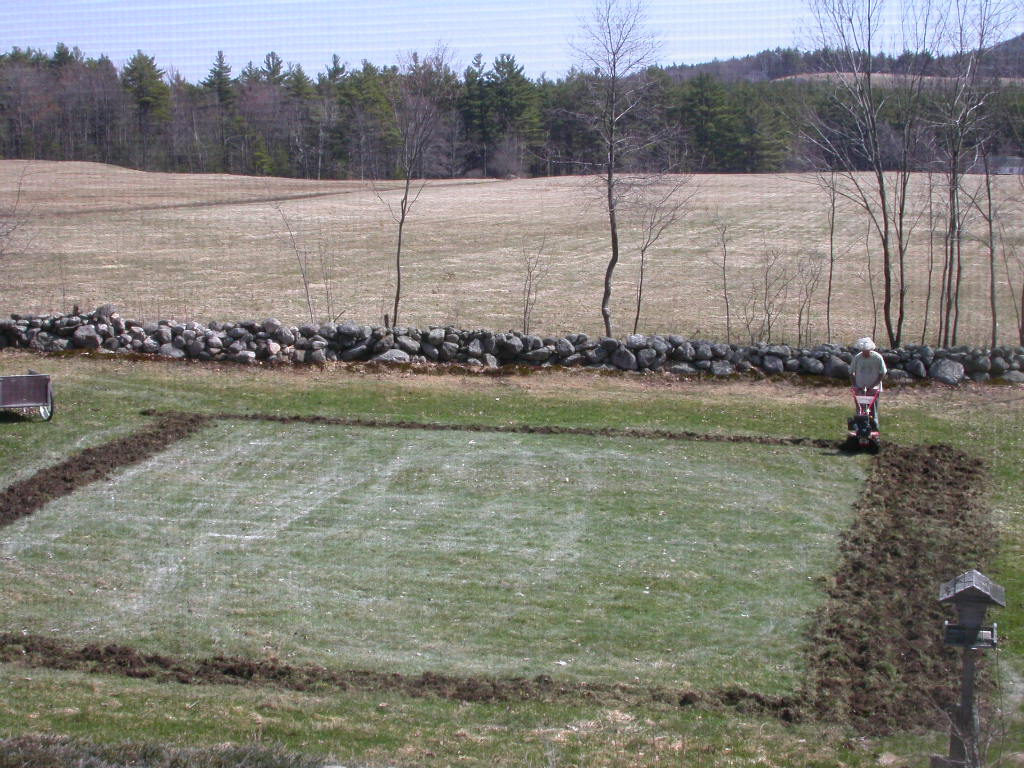
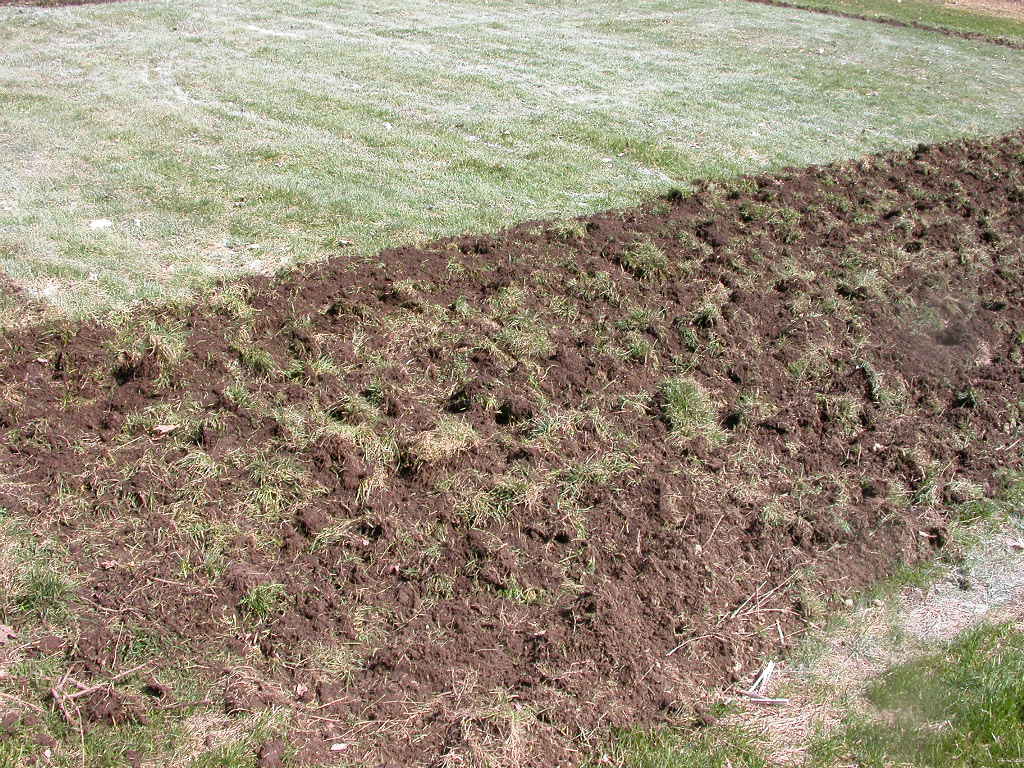
Mulching. The principle behind mulching to kill weeds is that you are starving them by preventing access to light. In general, perennial weeds and grasses have extensive root systems and a good supply of energy with which to try to re-grow – so successful mulching requires a mulch that completely blocks light, and it needs to be in place for several weeks or months.
Mulching can be very easily done using a heavy (6-mil or heavier) piece of black plastic, weighted down along the edges with heavy rocks or sandbags. As long as the plastic is UV-stabilized, it can be used repeatedly for the same or other purposes. You can also use any of a number of organic materials, such as newspaper, leaves, straw, wood chips, etc. To be successful, the layer must be thick enough to completely prevent light from reaching the plants growing underneath. Avoid using glossy papers and papers printed with colored inks. Wetting these mulching materials as they are put in place can help make a cohesive layer that is less likely to blow away in the wind.
Before removing the mulch, make sure that the sod underneath has been completely killed. Once the mulch has done the job, it can be left in place, with plants planted through it to reach the soil below, or it can be removed.
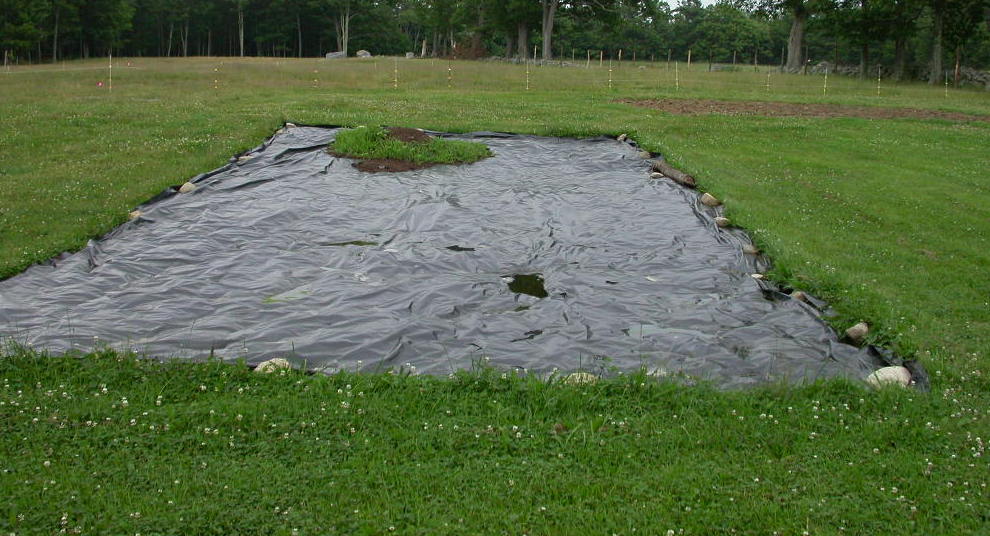
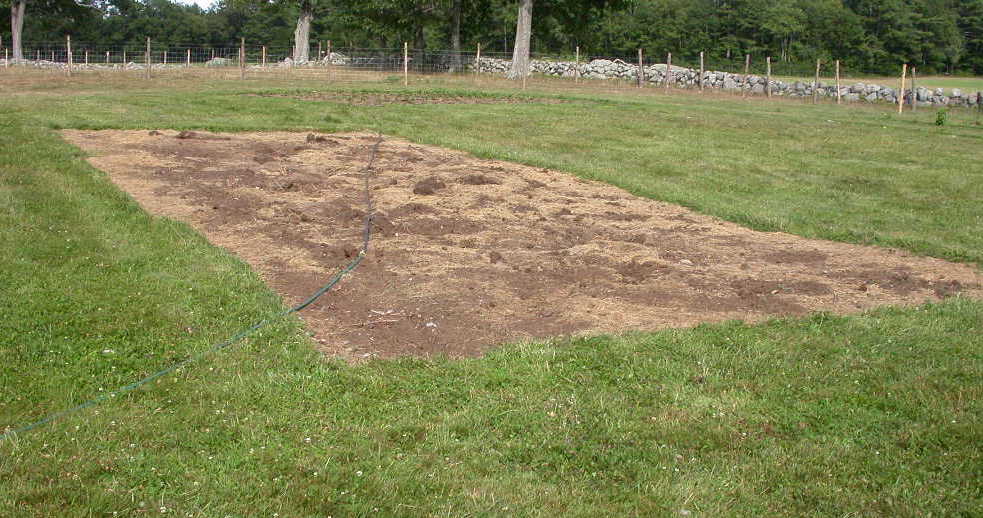
Cover the ground – protect the soil. If you have planned ahead and prepared the ground the summer before you'd like to plant the vegetable garden, you should protect the soil from erosion during the fall and winter by planting a winter cover crop. Oats are probably the most reliable and inexpensive cover crop for this purpose, and they can be purchased at most feed stores. Broadcast the seed at a rate of 2.5-3 lbs per 1,000 square feet onto freshly tilled ground, and rake to gently incorporate. Aim to plant between early August and mid-September to get maximum growth during the fall. The oats will die over the winter, making a thin layer of dead mulch that can be incorporated or planted through in the spring as soon as you are ready to plant the garden. Instead of growing a cover crop (or green manure), you could cover the ground with straw or other organic mulch that can be raked off the following spring.
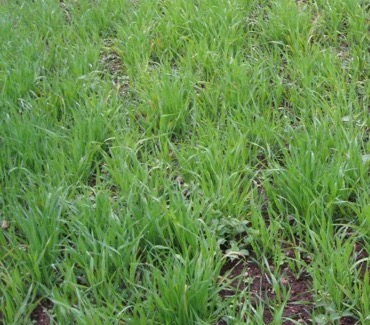
Making a plan and planting the garden. Once the garden soil has been prepared and is ready for planting, it's time to make a plan for fertilization, weed control during the season, and irrigation.
Fertilization. As mentioned above, we recommend that gardeners test their soil before planting to determine the amount of fertilizers needed. For more information, refer to Fertilizing Vegetable Gardens and Guidelines for Using Manures & Composts in the Home Garden. As a general rule, a vegetable garden will need: 25 lbs/1000 sq. ft. of 10-10-10 OR 60 lbs/1000 sq. ft. of 4-3-3 or similar organic blended fertilizer.
Ideally, half of the fertilizer should be applied to the garden and mixed thoroughly into the top few inches of soil before planting; and half should be applied mid-way through the growing season in a "side-dress" application, placed near the plants and scratched lightly into the soil surface.
Weed control. If the perennial weeds were not completely killed prior to planting, they will try to re-grow and compete with the crops in your new vegetable garden. The first growing season is the most critical time to get these perennial weeds under control. They can be managed by repeated hoeing or cultivation (either by hand or with equipment), or by using mulches.
The best mulching materials are ones that you have on-hand in large quantities. Lawn clippings, straw, leaves, pine needles, and wood chips all make excellent mulches. A layer of organic mulch needs to be relatively thick (at least 4 inches) to prevent light from accessing the ground below. If carbon-rich mulches (straw, wood chips, sawdust) are mixed into the garden soil, the soil microbes will start to break them down, temporarily stealing nitrogen during the process, resulting in nitrogen-starved crops. This is not usually a problem if you continually add mulch to the top of the layer, and avoid mixing the mulch materials into the soil below.
If the garden is in the middle of a lawn or field, a good strategy to keep the surrounding grasses from creeping into the garden is to maintain a narrow tilled strip around the garden, just the width of a tiller. Tilling this strip every 3 weeks or so makes a barrier that defines the garden space and prevents weeds from creeping in and taking over.
Irrigation. As a general rule, most vegetable crops grow best if they receive about an inch of rainfall per week through the growing season. In a season with regular rainfall, supplemental irrigation may not be necessary except when first transplanting young plants into the garden. However, in a dry year, access to irrigation may be needed. Most home gardeners irrigate overhead (with a hose and breaker attachment or with a sprinkler) or using drip irrigation (using soaker hoses or drip tapes or emitters). Access to a source of water is critical in either case. The following resources are excellent sources of more detailed information on home garden irrigation strategies:
- Irrigating the Home Garden (Virginia State University)
- Drip Irrigation for Home Gardens (Colorado State University)
Ready to plant. With all of your prep work done, you're ready to plant your vegetable garden. You may find the following resources helpful, as you think about when and what to plant.
- Growing Vegetables: When to Plant your Vegetable Garden
- Starting Plants Indoors from Seed
For a full collection of resources related to vegetable gardening, visit: https://extension.unh.edu/tags/vegetable-gardening-home
How To Prepare A Garden Plot For Next Season
Source: https://extension.unh.edu/resource/preparing-vegetable-garden-site
Posted by: marincamonwarld.blogspot.com

0 Response to "How To Prepare A Garden Plot For Next Season"
Post a Comment